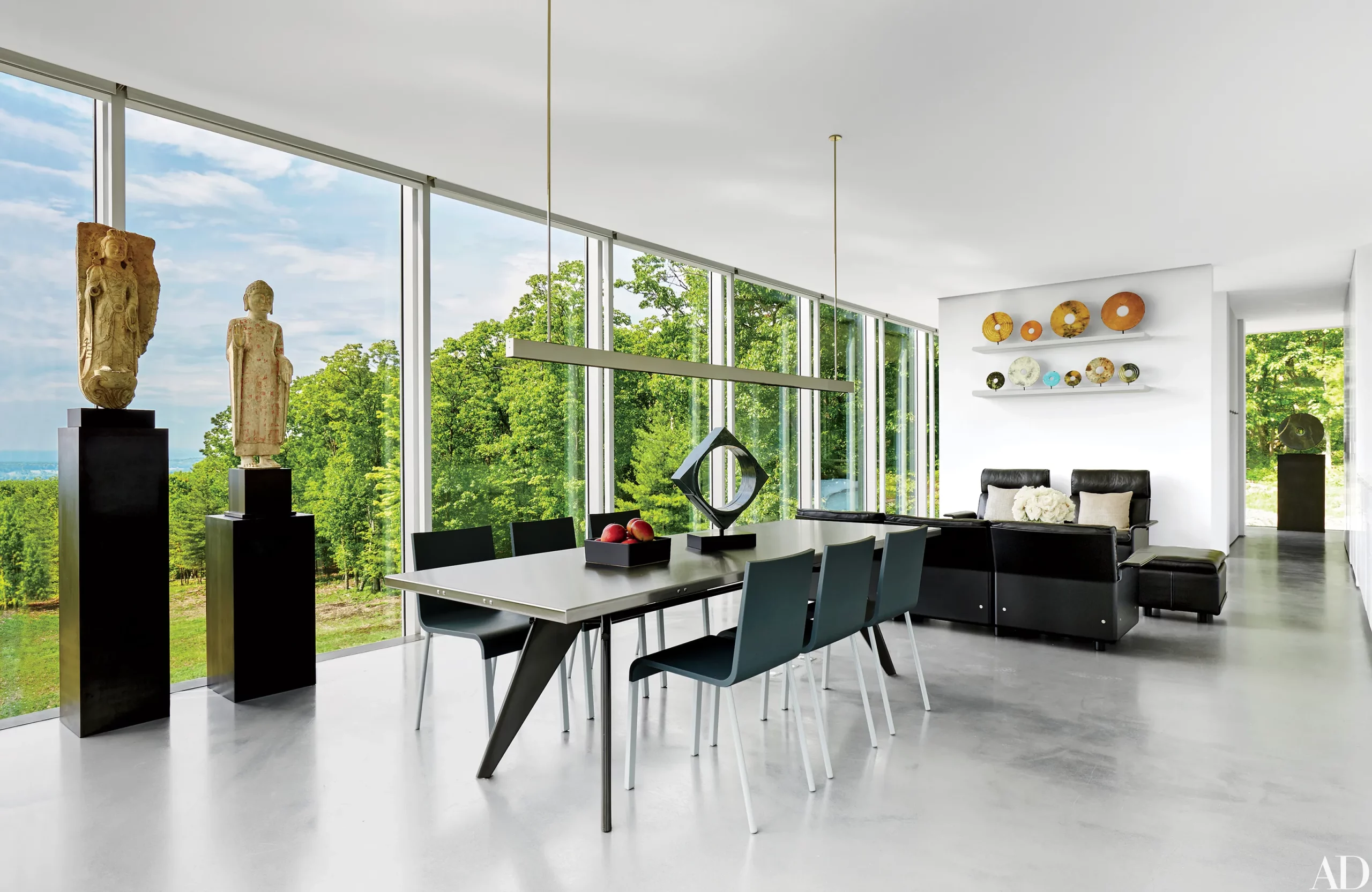Have you ever walked into a building and marveled at its beauty, functionality, and the way it made you feel? This remarkable feat is the result of a powerful collaboration between architects and interior designers, two professions that are distinct yet interconnected. These professionals work in tandem, blending their unique expertise to shape the spaces we inhabit and enhance our lives.
Architects and Interior Designers: Shaping Spaces, Enhancing Lives
While both professions share a commitment to creating exceptional spaces, their approaches and areas of focus differ. Understanding these distinctions illuminates the vital synergy they bring to the design process.
The Architect: Building the Bones
Architects are the masterminds behind a building’s structure, ensuring safety, stability, and functionality. They are experts in:
- Structural Integrity: Architects design buildings to withstand the test of time and the elements, ensuring the safety and well-being of occupants.
- Functionality: They carefully plan spaces to optimize flow and ensure they meet their intended purpose, creating user-friendly and efficient environments.
- Sustainability: Architects are increasingly incorporating sustainable design principles, creating energy-efficient and environmentally responsible buildings.
The Interior Designer: Bringing the Space to Life
Once the architect lays the groundwork, the interior designer steps in to infuse the space with personality, style, and functionality. They excel in:
- Space Planning: Interior designers artfully arrange furniture and elements to maximize flow, create a sense of balance, and optimize the use of space.
- Color and Materials: They possess a keen eye for color and texture, selecting palettes and materials that evoke specific moods, complement the architectural style, and enhance the overall aesthetic.
- Lighting Design: Interior designers understand the power of light to transform spaces, using natural and artificial light to create ambiance, highlight features, and enhance functionality.
The Power of Collaboration
When architects and interior designers collaborate effectively, the result is a harmonious blend of beauty and functionality. This synergy ensures:
- A Cohesive Design Vision: The interior design seamlessly integrates with the architectural style, creating a unified and visually appealing space.
- Attention to Detail: From the placement of electrical outlets to the selection of door handles, every detail is carefully considered to enhance both aesthetics and functionality.
- A Space that Reflects Your Vision: Clients benefit from a collaborative design process that takes their needs, preferences, and lifestyle into account.
What Defines the Roles of Architects and Interior Designers?
Think of architects as the structural engineers of our built environment. They are responsible for the overall design and integrity of buildings, from the foundation to the roofline. They translate design concepts into technical drawings, ensuring that buildings are safe, functional, and meet all building codes and regulations.
Interior designers, on the other hand, focus on the art and science of enhancing the interior spaces within a building. They create functional and aesthetically pleasing environments that meet the needs and preferences of the occupants.
Here’s a table summarizing their key roles:
| Role | Focus | Responsibilities |
|---|---|---|
| Architect | Building structure and exterior design | Structural integrity, safety, building code compliance, project management |
| Interior Designer | Interior aesthetics and user experience | Space planning, furniture selection, material choices, color palettes, lighting design |
The collaboration between architects and interior designers is crucial for creating spaces that are both beautiful and functional. Architects lay the foundation, while interior designers enhance the user experience within that foundation.
How Do Architects and Interior Designers Collaborate?
The collaborative process between architects and interior designers is an iterative one, characterized by open communication, mutual respect, and a shared commitment to realizing the client’s vision.
Here’s a glimpse into their collaborative journey:
- Initial Consultation: The architect and interior designer meet with the client to understand their needs, preferences, and vision for the space.
- Design Development: The architect develops the architectural plans, ensuring structural integrity and functionality, while the interior designer creates space plans, selects furniture and materials, and develops a color palette and lighting scheme.
- Coordination: The architect and interior designer work closely together to ensure that their designs are complementary and integrated. This stage involves regular communication and coordination to address any potential conflicts or challenges.
- Construction and Installation: The architect oversees the construction process, while the interior designer manages the installation of furniture, fixtures, and equipment.
- Project Completion: The final stage involves a walk-through with the client to ensure that the finished space meets their expectations.
Metaphors for Collaboration:
To better understand this synergy, consider these analogies:
- Architects and interior designers are like composers and conductors, respectively. The architect creates the musical score (the building’s structure), while the interior designer brings that score to life through their interpretation and arrangement (the interior design).
- Think of architects as master bakers and interior designers as cake decorators. The architect bakes the cake (the building), providing the foundation and structure, while the interior designer adds the frosting, decorations, and finishing touches (the interior design) that make it a delight to behold.
Why is Synergy Crucial Between Architects and Interior Designers?
The synergy between architects and interior designers is essential for creating cohesive, functional, and aesthetically pleasing spaces. When these professionals work together effectively, they enhance:
- Harmony and Flow: The interior design complements the architectural style, creating a seamless transition between the exterior and interior spaces.
- Functionality and Efficiency: Rooms are designed to be both aesthetically pleasing and practical, with furniture layouts that optimize flow and maximize space utilization.
- Visual Appeal: Interior designers elevate the ambiance of a space through carefully chosen colors, textures, lighting, and decorative elements.
Benefits of Collaboration:
| Benefit | Description |
|---|---|
| Cohesive Design | A unified and harmonious aesthetic, where the interior design complements the architectural style. |
| Enhanced Functionality | Well-planned spaces that optimize flow, maximize space utilization, and meet the specific needs of the occupants. |
| Elevated Aesthetics | A visually appealing and inviting environment that reflects the client’s style and enhances their quality of life. |
Building a Strong Partnership:
Successful collaborations between architects and interior designers are built on:
- Open Communication: Regular communication, active listening, and a willingness to share ideas and feedback are essential.
- Mutual Respect: Recognizing and valuing each other’s expertise and contributions fosters a positive and productive working relationship.
- Shared Vision: A shared understanding of the client’s goals, aesthetic preferences, and functional requirements is crucial for a successful outcome.
When architects and interior designers work in sync, they leverage their combined expertise to create spaces that are not only visually stunning but also highly functional, comfortable, and tailored to the unique needs and lifestyles of the occupants.
Expanding Our Design Horizons
The future of design is collaborative and innovative. Architects and interior designers are constantly pushing boundaries, exploring new materials and technologies, and embracing sustainable design practices.
For example, the rise of Building Information Modeling (BIM) software has revolutionized the way architects and interior designers collaborate. BIM allows for the creation of virtual 3D models that can be shared and modified in real-time, facilitating better communication, reducing errors, and streamlining the design process.
Furthermore, as sustainability becomes increasingly important, both professions are prioritizing eco-friendly materials, energy-efficient systems, and design strategies that minimize environmental impact.
The collaborative spirit between architects and interior designers is shaping a future where our built environments are not only beautiful but also functional, sustainable, and deeply connected to the needs of the people who inhabit them.
For a deeper dive into specific design styles and their unique elements, explore our guides on:
- Beauty salon interior design: Discover how to create a welcoming and stylish space that enhances the client experience.
- Desert modern interior design: Explore the beauty of natural materials, clean lines, and geometric shapes in this popular design style.
- Ege interior design: Delve into the world of Scandinavian elegance, characterized by minimalism, functionality, and a focus on comfort.
- How to Measure Your Belt Size (for Women): 3 Easy & Accurate Methods - April 27, 2025
- How to Remove Permanent Hair Dye From Hair: Safe & Effective Methods - April 27, 2025
- How to Remove Ink from Leather: Effective DIY Methods and Expert Tips - April 27, 2025










